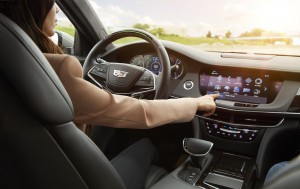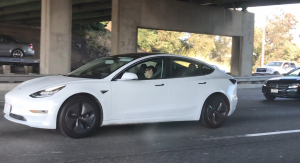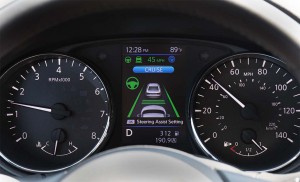
Cadillac's Super Cruise provides "hands-free driver assistance." It will expand the availability of Super Cruise across the entire line-up by 2020.
What is in a name, asked William Shakespeare, and while the Bard was talking about a rose, his modern-day counterpart might be asking the same thing about the names being applied to the latest high-tech systems designed to share some of the driving duties with human motorists.
More and more of today’s vehicles features advanced driver assistance systems, like forward collision warning and automatic emergency braking. The most sophisticated ADAS technology – such as Tesla’s Autopilot and Cadillac’s Super Cruise – even can assume some limited driving duties. But there’s where the problem sets in, according to a new study by the Insurance Institute for Highway Safety. The findings suggest those names often imply that these systems can do more than they’re designed for, leading to potentially dangerous situations.
“Current levels of automation could potentially improve safety,” IIHS President David Harkey said. “However, unless drivers have a certain amount of knowledge and comprehension, these new features also have the potential to create new risks.”
The IIHS points, in particular, to Tesla’s Autopilot, a name, the insurance industry trade group says, “signals to drivers that they can turn their thoughts and their eyes elsewhere.”
(Tesla’s Autopilot helps avoid drowsy driver collisions. Click Here for the story.)
That was underscored repeatedly in recent months, as TheDetroitBureau.com noted just yesterday, reporting on the fact that a number of Teslas have been spotted cruising down highways, their drivers apparently asleep and letting the Autopilot system take over complete control. While Tesla CEO Elon Musk has repeatedly promised that a fully autonomous version of the system is close to release, the current Autopilot system requires that motorists remain awake and aware, ready to take control in an emergency.

Reddit user MiloWee posted video of this Tesla Model 3 driver apparently asleep behind the wheel in traffic in Los Angeles.
Federal regulators recently determined that Autopilot took the primary blame in a fatal crash when a driver didn’t intervene in just such a crisis situation.
The reality is that the auto industry is still struggling to reach the point where drivers can fully hand off control – or where the driver might be removed from the vehicle entirely. And the first of the so-called Level 4 and Level 5 autonomous systems are expected to be reserved for fleets, such as an Uber or Lyft, rather than sold to consumers because of their higher costs.
The current technologies offered by automakers like Tesla, BMW, GM and Nissan fall into the Levels 1 and 2 category and still require extensive human oversight.
For its survey, the IIHS asked 2,000 drivers about five of the most advanced Level 2 systems, including Autopilot, Super Cruise, Nissan’s ProPilot, BMW’s Driving Assistant Plus, and the Traffic Jam Assist systems used by Audi and Acura.
(Click Here to see more about Cadillac’s expansion of Super Cruise coverage.)
Fully half of the respondents thought that Autopilot allowed a driver to take their hands completely off the wheel. For other Level 2 systems, the responses ranged from 20 to more than 30%.
A significant number of those surveyed also thought these systems were safe enough for the driver to talk on a cellphone, text or even watch a video. And, though a small minority, some thought it was even safe to take a nap in a vehicle equipped with one of these systems.
One likely reason is that the names used for these features imply more than what they are actually capable of, especially Autopilot, said Harkey, adding that, “Manufacturers should consider what message the names of their systems send to people.”
The names that manufacturers have chosen aren’t the only problem, IIHS found when surveying motorists. Another project found that they can be seriously confused by the information these systems present on today’s complex digital instrument clusters. In some cases, the displays miss potential hazards, lulling drivers into a sense of complacency.
“If your Level 2 system fails to detect a vehicle ahead because of a hill or curve, you need to be ready to brake. Likewise, when lane centering does not work because of a lack of lane lines, you need to steer,” said Harkey. “If people aren’t understanding when those lapses occur, manufacturers should find a better way of alerting them.”
(To see more about Super Cruise outperforming Autopilot, Click Here.)
The new IIHS report has received praise from other consumer groups, such as the National Safety Council which said it “signals … the need for better education” so motorists actually understand both the capabilities and limits of the new technologies showing up on more and more vehicles.

